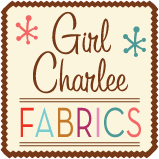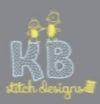How to pick a pattern size using your over bust and full bust measurements.
12:09 PMHave you been sewing for a while but can't quite seem to get the right fit in your shoulders and bust, even though time and again you go by your full bust measurement? The most frequent reason for this problem is that your cup size doesn't match up to the pattern's drafted cup size! When that happens, the shoulders end up either smaller or larger than they need to be for your body! Part 1 will cover how to measure for your sewing cup size and figure out how much ease you need to add. Part 2 will be how to do an actual full bust adjustment on a KNIT shirt. This is actually different from a woven pattern (although similar).
So how do you know if you're wearing the right size? Sometimes you can figure it out from just looking at how your clothes fit.
 Image one, you can see all the wrinkling above and around the bust. This means the clothes are trying to take fabric from those other areas to make enough space for the bust! All those wrinkles are literally pulling from the back, sides and even the sleeve to try to make more room for my bust. Let me note, I still love this shirt and will wear it until all 3 of the ones I bought have holes in them. But if I'm sewing for myself, I can and will do better.
Image one, you can see all the wrinkling above and around the bust. This means the clothes are trying to take fabric from those other areas to make enough space for the bust! All those wrinkles are literally pulling from the back, sides and even the sleeve to try to make more room for my bust. Let me note, I still love this shirt and will wear it until all 3 of the ones I bought have holes in them. But if I'm sewing for myself, I can and will do better.
So, let's figure out your sewing cup size! For clarification, your sewing cup size is not the same as your bra cup size. But don't worry, it isn't hard to figure out! You'll need 2 measurements to figure out your sewing cup size.
Measurement 1 is your over bust. That is the area ABOVE your bust, but under your arm pits. The second measurement is your full bust measurement. That is the usual measurement you're probably used to taking.
Now take your full bust measurement and subtract your over bust measurement. That is your SEWING cup measurement.
Just like bras, the inches equal cup sizes. SO:
1"=A
2"=B
3"=C
4"-D
etc.
For me, my over bust is 33". My full bust is 38". My sewing cup size is E. My bra size, well let's just say it is a LOT bigger than E. Most designers draft for a B cup. A few draft for a larger cup. How do you know what your pattern is drafted for? Well Becca Duval over at Free Notion did a fantastic post that includes many of the more common PDF designers and their drafted cup sizes. What a great resource!
So, let's say that the pattern I'm using uses a B cup for their design. Now how do I pick my size?! So take your over bust measurement and add 2" to make it a "B" cup. Check the size chart and match up your "shoulder" size to the pattern.
For simplicity, I'll be using the Nap Time Creations Long Sleeve Tee (free on craftsy) to help walk you through this process. The tutorial for assembly is here. I have copied and pasted the chart from that page:

Please note this post doesn't include how to draft the actual FBA. it only helps you pick your size and decide how much to add. We'll see if I ever get around to doing that.




















3 comments
Great post Ti! I needed this walk through.
ReplyDeleteI know this an older post and going down further in the text I get what you mean. I just wanted to point out that you've written "Now take your full bust measurement and subtract your full bust measurement." which was a bit confusing.
ReplyDeleteOtherwise a really great explanation that I will be pinning for future reference, thank you :)
Crazy! How could this sit so long with such a typo and no one notice? Thank you.
Delete